This Wurkkos FC11 was provided by Wurkkos for review.
Concept
The Wurkkos FC11 is a budget everyday carry and general-purpose flashlight powered by an 18650 battery with USB-C charging, a side e-switch, a magnetic tailcap, and a high-CRI Samsung LH351D LED.
EDC lights in this size are very popular, and the choice of features is excellent, especially given the $30 price tag. Flashlight manufacturers have been slow to adopt the LH351D, despite its combination of high output and very good color rendering. USB-C, also has taken its time catching on.
Update May 2020: Wurkkos quietly introduced a new UI for this model, which is shipping from US Amazon and possibly other locations. The changes fix all of my complaints.
Design
The FC11's design choices are mostly higher-end than I'd expect to see at $30. The tube form-factor, trapezoidal threads, and spring clip are fairly conventional, but the textured reflector and slightly recessed, easily located button are not. There's a red/green battery status indicator light under that switch. There are springs at both ends of the battery tube. The magnet is among the strongest I've seen in a flashlight. USB-C is a very welcome decision in contrast to the more common micro-B. The FC11 uses a FET driver, which does not regulate power other than by blinking the LED thousands of times per second (PWM). This is appropriate for the combination of high max output and low price, and I find the costs to output regulation and efficiency reasonable at this price point. The high-CRI, 5000K LH351D is the emitter I'd put in a light like this if I was doing a swap for my own use, and what I think is best-suited for a mass-market EDC light.
The UI is a bit more of a mixed bag. I like that there's an option of ramping or fixed modes to provide a choice between predictable runtime and precise output control. I'm also happy to see that it's possible to ramp down as well as up, a UI feature rarely seen outside hobbyist firmwares. It's not all perfect though; there's no shortcut to low in either operating mode, and the two work differently. While ramping is a single click for on/off and hold-to-adjust, stepped is a single click for on, click to change modes, and long-press for off. To make that worse, double-click and triple-click are shortcuts to max and strobe respectively, so trying to change modes too fast results in triggering the shortcuts.
Aside from some UI details, the FC11 is an excellent design for its purpose and price point. I can think of competitors for twice the price or more that really ought to have springs on both ends of the battery tube, a better button design, or a better choice of LED like the FC11 does.
Execution
Wurkkos is somehow affiliated with Sofirn, a company that has earned a reputation for very solid budget lights over the past few years, including some BLF community projects. It's no surprise that the FC11 gets most things in its execution right. The build quality is solid, and it does what it says it does.
The only thing coming to mind that's objectively wrong or poorly done is that the USB-C charging doesn't comply with the standard, and can only charge using an A-to-C cable or a series of adapters that add the correct resistance between a certain pair of pins. It's my understanding this should be easy to get right, not requiring any active electronics. More flashlights with USB-C get this wrong than right, but it's easy enough that there's not much excuse. The charging performance is fairly typical at about 1A, finishing in just under four hours.
Conclusion
The Wurkkos FC11 is the entry-level flashlight to beat at the time of this review. The feature set and value for the money are fantastic. The UI could use some refinement, but that's not enough to offset the value proposition.
Highlights
- High CRI
- Button is reasonably easy to find wearing gloves
- Bidirectional ramping UI
- Very strong magnet
- Excellent value
Lowlights
- Noncompliant USB-C requires an A-to-C cable or series of adapters
- No shortcut to low
- Stepped and ramping UIs behave differently
Details and technical analysis
Versions
The FC11 only comes one way.
Accessories
The FC11 comes with a 3000 mAh unprotected button-top 18650 battery, a USB A-to-C cable, and spare O-rings.
Modes and user interface
Update May 2020: the UI has been updated with long-press from off to low, and both groups using single-click on-off and hold-to-adjust-brightness. This is a huge improvement.
Smooth ramp
| State | Action | Result |
|---|---|---|
| Off | Single click | Memorized mode |
| On | Single click | Off |
| On | Hold | Increase brightness |
| On | Hold, release, hold | Decrease brightness |
| Any | Double-click | Max |
| Any | Triple-click | Strobe |
| Max/strobe | Single-click | Previous state (including off) |
| Off | Quad-click | Lockout |
| Lockout | Quad-click | Medium |
| Off | Hold 3 seconds | Switch to stepped |
Stepped
| State | Action | Result |
|---|---|---|
| Off | Single click | Memorized mode |
| On | Single click | Change mode (L->H) |
| on | Hold | Off |
| Any | Double-click | Max |
| Any | Triple-click | Strobe |
| Max/strobe | Single-click | Previous state (including off) |
| Off | Quad-click | Lockout |
| Lockout | Quad-click | Medium |
| Off | Hold 3 seconds | Switch to smooth |
Single clicks to change mode are problematic in combination with multi-click shortcuts because changing modes too quickly is treated as the shortcut.
Output, runtime, and efficiency
Advertised performance is presumably with the included Wurkkos unprotected 3000 mAh 18650 battery. All testing was performed with an Acebeam protected 3100 mAh 18650 battery, which is believed to use a Sony VTC6 cell.
| Mode | Advertised Lumens | Estimated Lumens | Percent of claim | Advertised throw (FL1 meters) | Estimated throw (FL1 meters) | Percent of claim |
|---|---|---|---|---|---|---|
| Eco | 2 | 2 | 100 | - | 5.8 | - |
| Low | 50 | 59 | 118 | 28 | 32 | 113 |
| Mid | 300 | 355 | 118 | 67 | 78 | 116 |
| High | 700 | 770 | 110 | 104 | 115 | 110 |
| Turbo | 1300 | 1311 | 101 | 144 | 150 | 104 |
Where a graph is present, runtimes and efficiency are based on data logged during a runtime test. Otherwise, runtime is predicted from power consumption with a full battery, and is likely pessimistic since current will decrease as the battery drains in a direct-drive light. Battery capacity used to compute efficiency is taken from this test, using the closest match for current.
| Mode | Estimated lumens | Graph | Advertised Runtime | Time to 80% | Time to 50% | Time to 10% | Tailcap current (mA) | Efficiency (lm/W) |
|---|---|---|---|---|---|---|---|---|
| Standby | - | - | - | - | - | 8 years | 42.7 uA | - |
| Eco | 2 | - | 275 hours | - | - | 529 hours | 5.67 | - |
| Low | 59 | - | 45 hours | - | - | 22 hours | 134 | - |
| Mid | 355 | graph | 9 hours | 99 minutes | 192 minutes | 4.8 hours | 856 | 99 |
| High | 770 | graph | 2.75 hours | 1 minute | 5 minutes | 4 hours | 2000 | 99 |
| Turbo | 1311 | graph | 1.2 hours | 1 minute | 1 minute | 3.5 hours | ~3600 | 97 |
Light quality
The only LED available in the FC11 is a 5000K, 90 CRI Samsung LH351D. Colors are far more vivid and accurate with this LED than most, and the tint is close to midday sunlight. It's a little greener than some options on a white wall, but it's only noticeable when compared directly to more rosy light sources. The spill is a little cooler than the hotspot, but otherwise the tint is fairly even across the beam.
There's PWM on all levels aside from maximum, but it's very fast and only detectable with instruments.
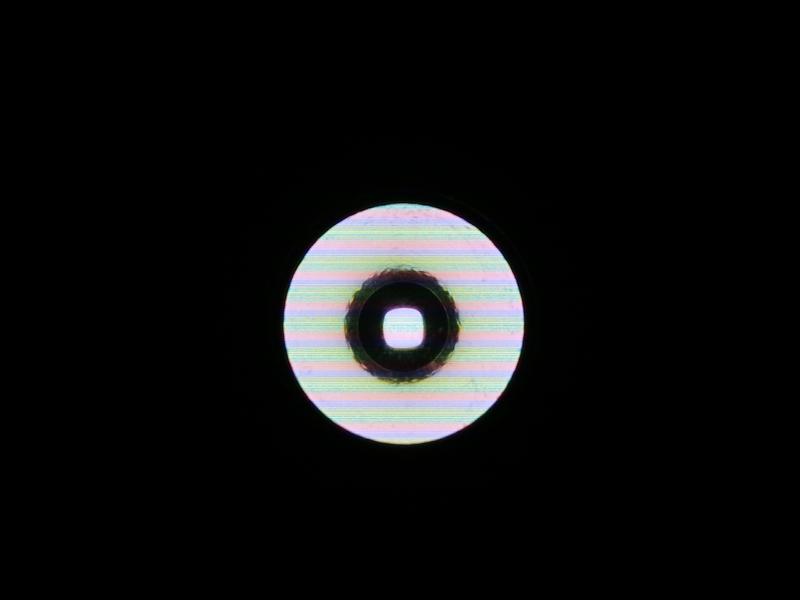
White wall
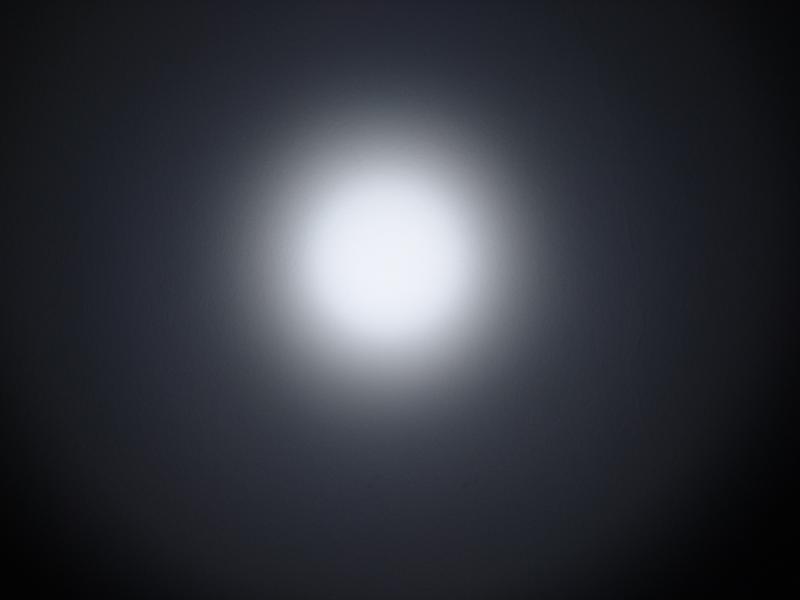
vs BLF 348 219B (right)
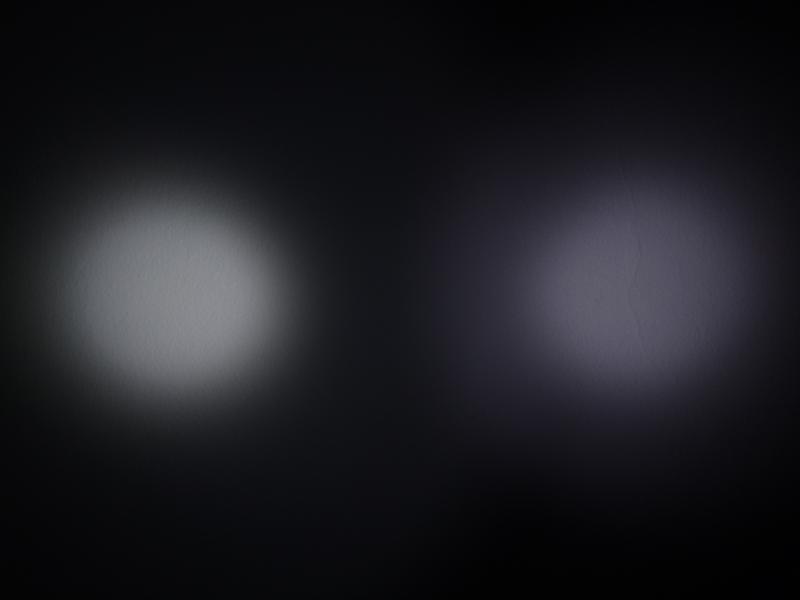
vs Armytek Wizard Pro 144A (right)
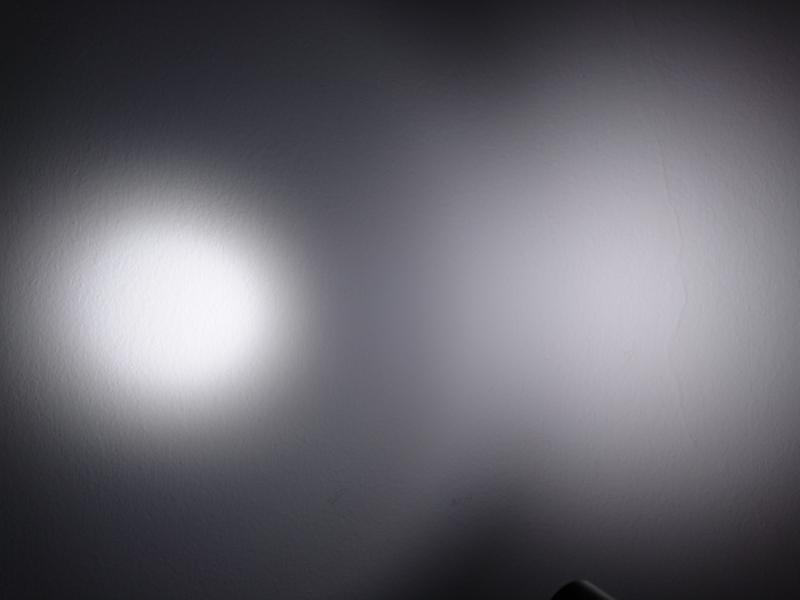
Outdoor
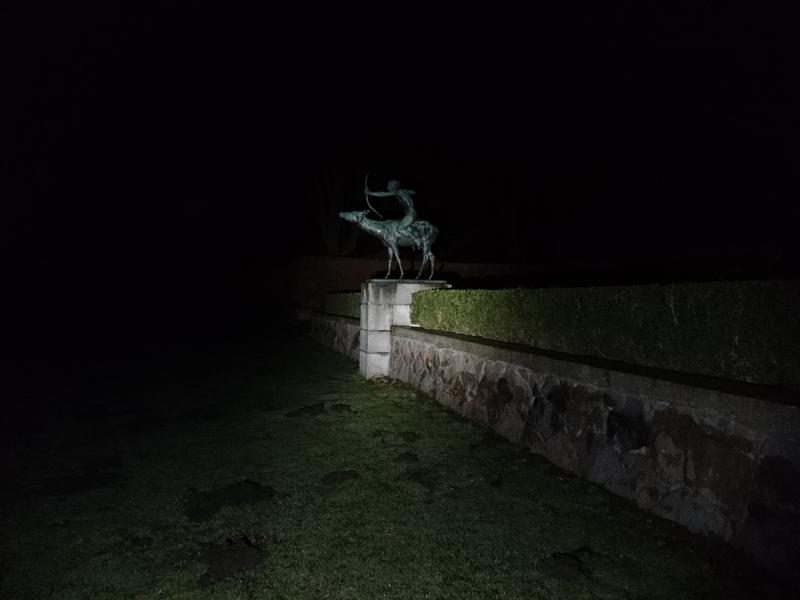
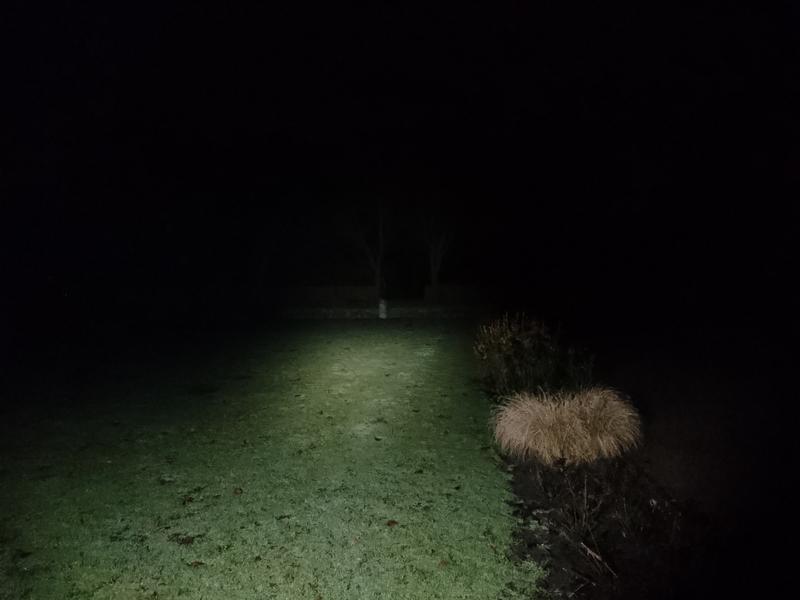
Construction
The FC11 is put together like a more expensive light, with thick anodizing, trapezoidal threads, and a well-sealed USB port. It handles a brief immersion with no sign of water ingress.
Ergonomics
The FC11 is slim for an 18650 light and comfortable to carry in a pocket. The clip is secure, and neither especially shallow nor especially deep. The button is easy to find by feel even with gloves on, and hard to press by accident while carrying in a pocket. The grooves on the body provide a reasonable amount of grip in most situations, though grip might be a bit low wearing some kinds of gloves, or with wet hands.
Batteries and charging
The FC11 comes with a Wurkkos branded 3000 mAh unprotected button-top 18650. All 18650 batteries I have available work in the FC11 and can be charged internally. As a direct-drive light, voltage sag affects output, and tested output was higher with a VTC6 than the included battery. There's low-voltage protection with a hard cutoff.
Charging takes just under 4 hours with a 3000 mAh cell and a USB power supply capable of over 1A.
Modification potential
Access to the emitter, MCPCB, and refelctor is trivial by unscrewing the bezel. Most 3 volt, 3535 emitters are reasonable swaps should a user desire more throw or a different tint. Removing the charging board and driver also appears to be fairly easy, and the addition of a pair of resistors makes charging with a C-to-C cable possible. Unfortunately, I don't think there's a reasonable firmware upgrade option for the driver.
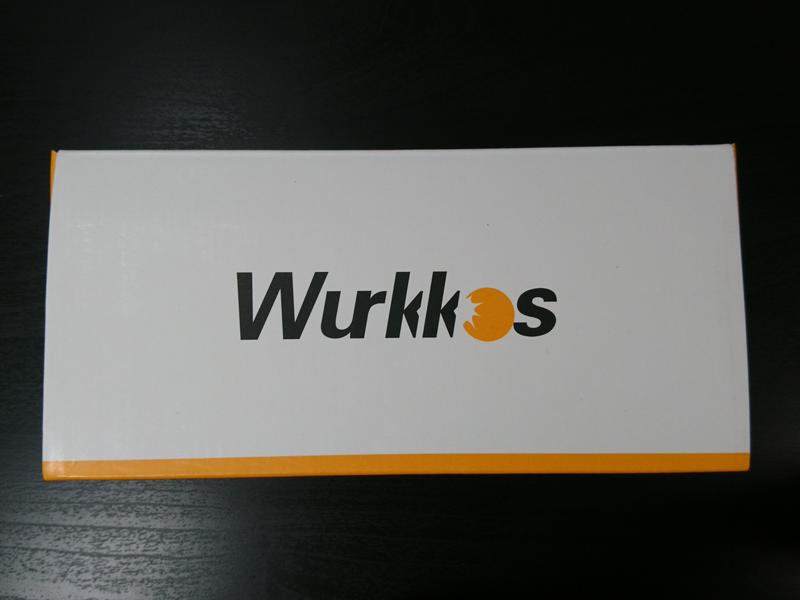
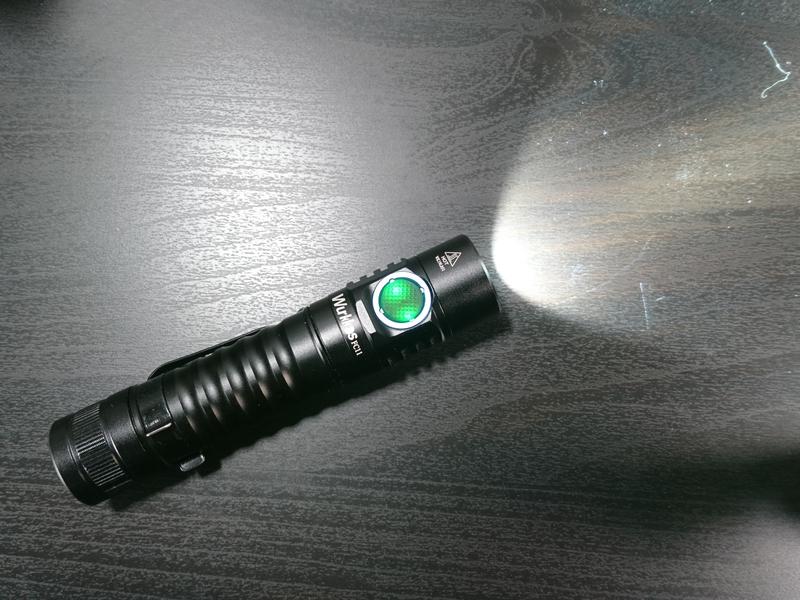
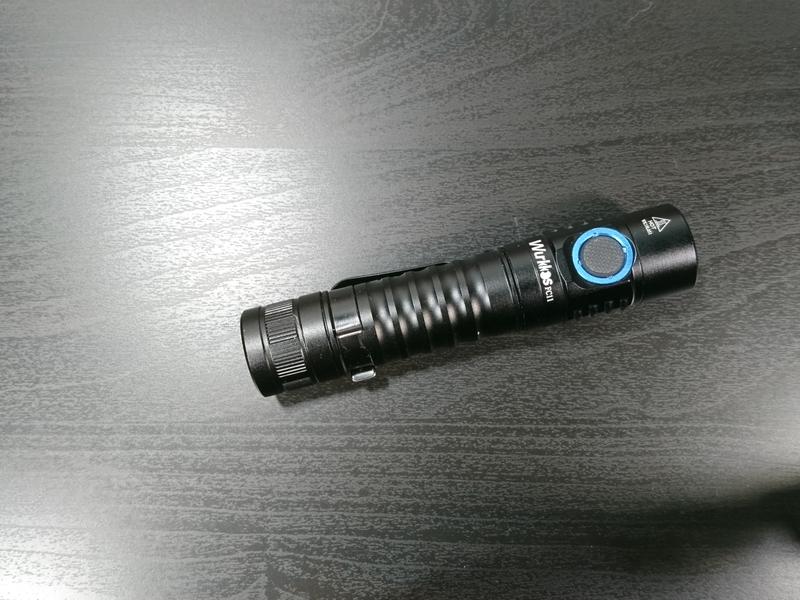
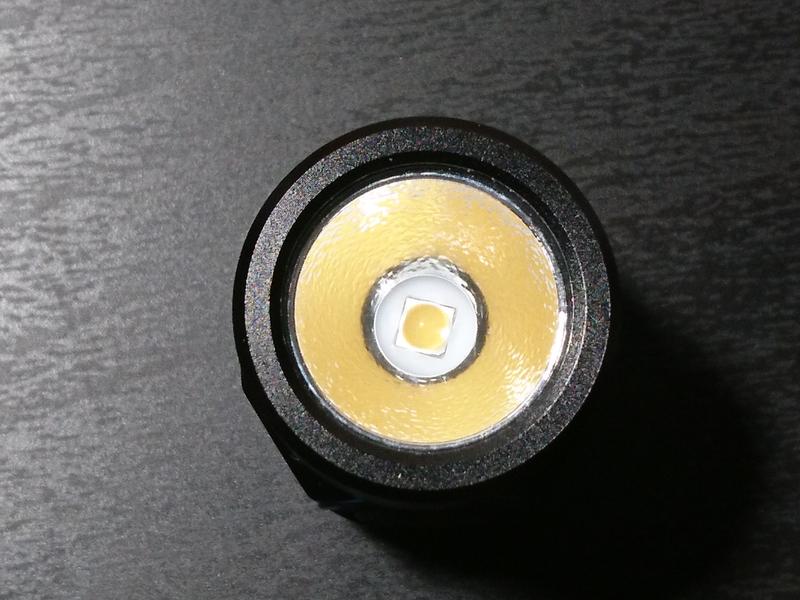
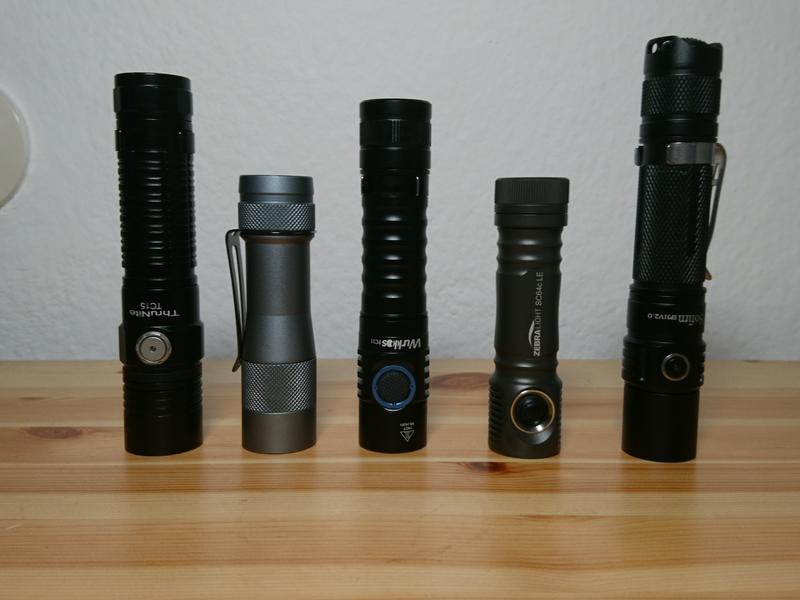
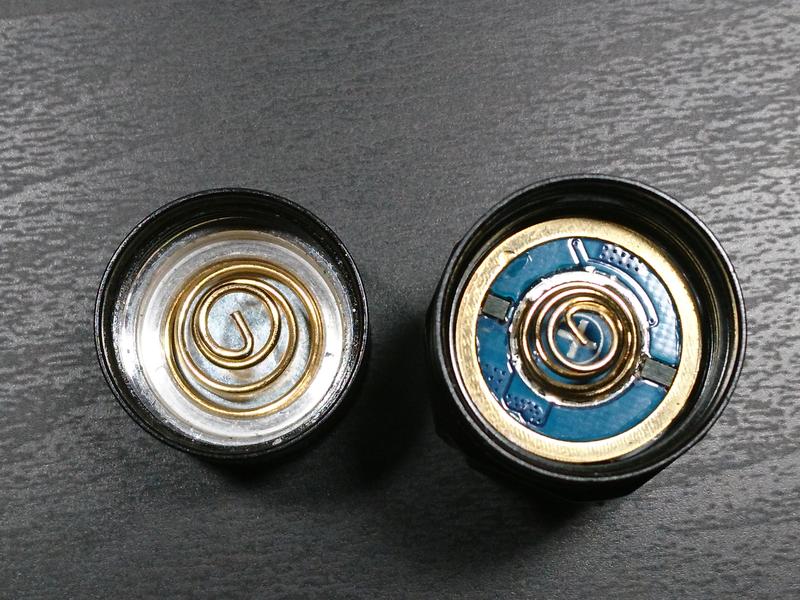
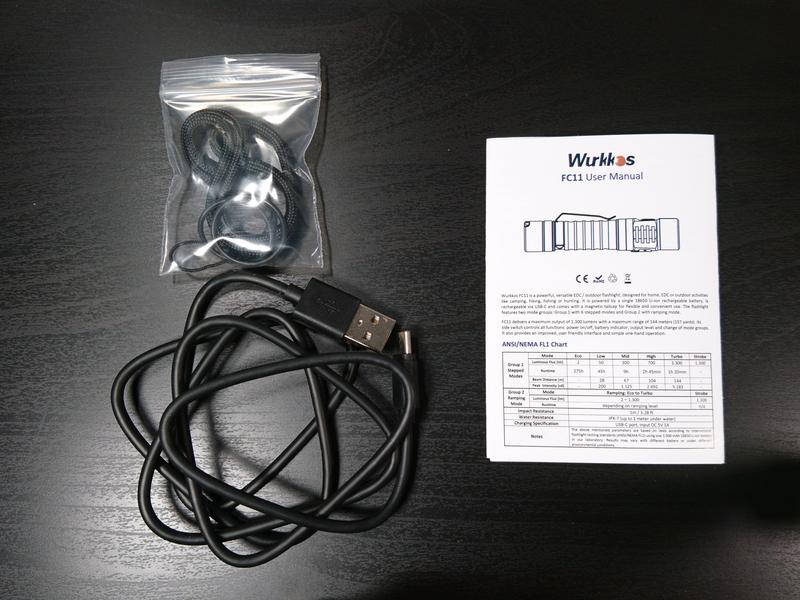
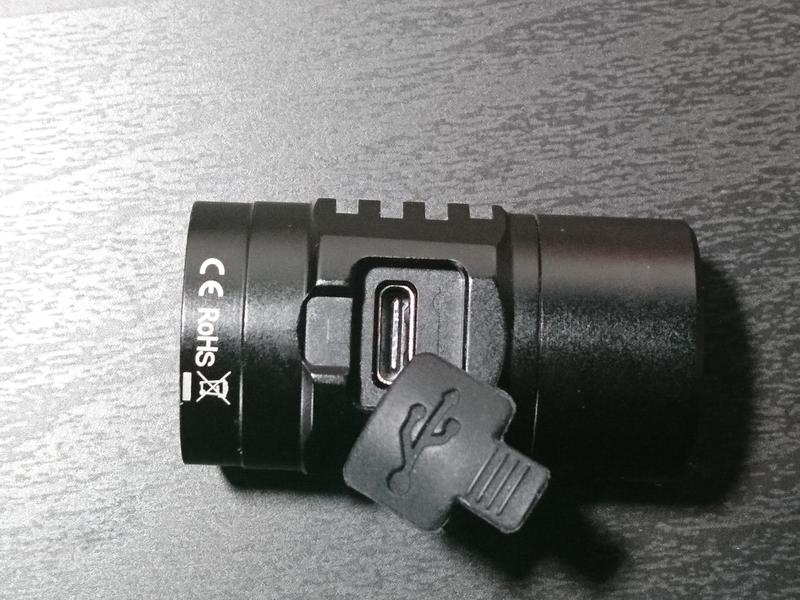
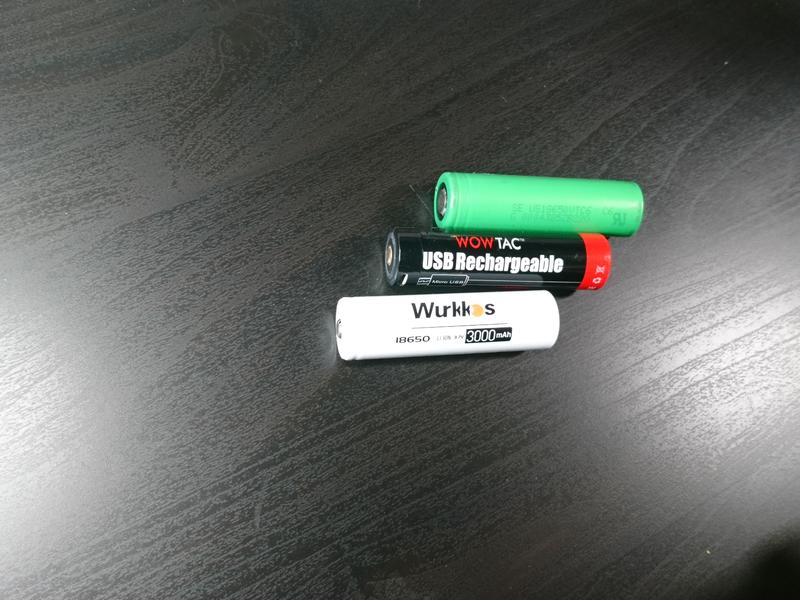
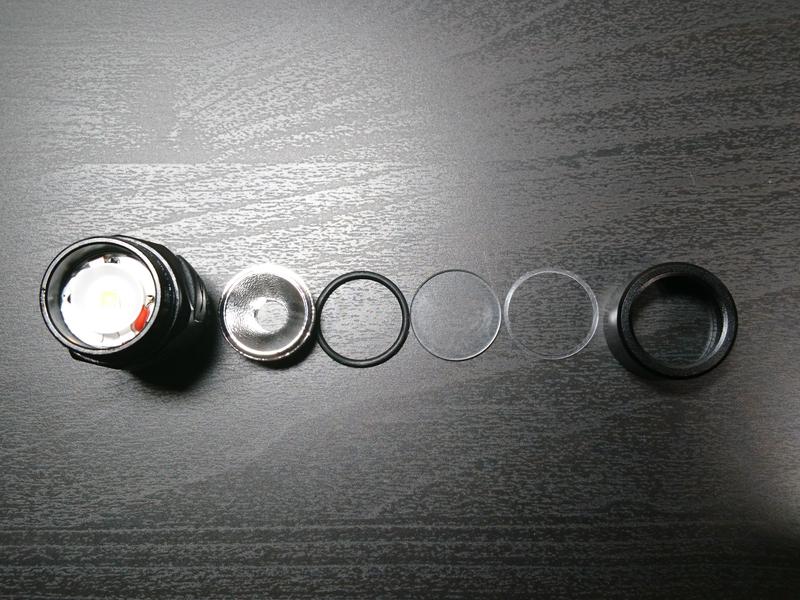
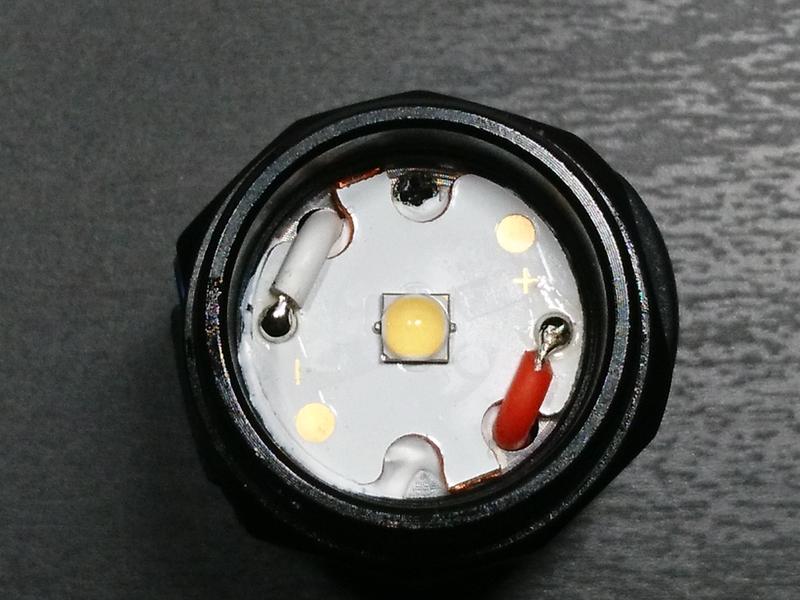
Comments